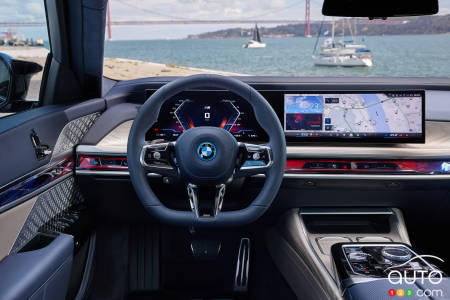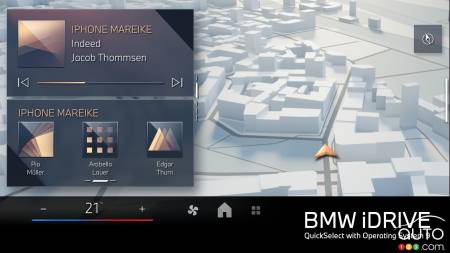• BMW's multimedia system has come a long way since its initial launch in 2001. Its latest version, iDrive 9, is without doubt its best.
The iDrive system is used throughout the BMW brand lineup, of course, but there’s also a version on board Rolls-Royce models, and yet another version, adapted for vehicles flying the Mini flag.
BMW iDrive
A first prototype of the iDrive system (called the Intuitive Interaction Concept) was presented on the Z9 concept in 1999. The commercial version arrived in September 2001 in the BMW 7 Series (E65).
That early version ran on an automotive-modified version of the Microsoft Windows CE system, in fact the Windows CE logo was visible when the system rebooted or crashed.
The first generation of iDrive controllers in the 7 Series featured only a large rotary knob. The GPS system was located in the trunk and could only read map CDs.
BMW iDrive 8
It’s 20 years later, and things have come a long way. Now, the current 8th-generation iDrive system features two screens, all while providing more physical buttons. An upgrade was even released in summer 2023; iDrive 8.5 is the latest to date.
The iDrive 8.5 interface has a new home screen that makes smartphone owners feel right at home. With clear functions, the new infotainment system has an iPhone-like menu. Users of the iDrive 8.5 system can customize the home screen at will.
The software interface also has fewer levels, so less navigation through long menus, which should help users focus on the road. The iDrive 8.5 system features a vertical strip on the driver's side for quick access to functions such as media playback, navigation and settings.
This version of the iDrive system is the last to be produced using a Linux operating system. The iDrive 9 system, which released in early 2024, switches to the car version of the Android mobile system.
Note that if you have iDrive 8 in your BMW or Mini (or if you're fortunate enough to own a Rolls...), you won't be able to upgrade to iDrive 9, which requires different hardware. Which is a shame, but know that there are advantages to iDrive 8, not least Apple's CarKey function, which lets you unlock and start your car without a key, from your Apple Watch.

BMW iDrive 9
As we’ve seen elsewhere in the industry, BMW's new iDrive 9 infotainment system will allow the addition of third-party applications, including video games that can be played by pairing Bluetooth controllers.
A new home screen with clearly presented functions offers enhanced ease of use on a new curved screen exclusive to BMW. The QuickSelect concept also brings an improved menu structure inspired by consumer electronics.
During its presentation of the new iDrive9 system, the German automaker also showed off its remote parking system, still under development, which will be controlled through the new system. BMW also previewed other upcoming technologies, such as augmented reality glasses.
Unlike other manufacturers who have also adopted Android for their connected vehicles, BMW is not integrating the basic applications provided by Google. Navigation, multimedia playback and other functions are handled, by default, by BMW's native applications.
Third-party apps can be installed via the Google Play Store, where you'll find Google Maps, Spotify and other popular mobile apps.
Touch and voice
When the BMW iDrive system first launched in 2001, the aim was to use a single screen and a single interactive element to group together as many functions as possible, thus reducing the number of buttons and displays. Hence the iDrive controller, comparable to a computer mouse.
The scrolling and clicking actions of a computer were translated into turning, pushing and pressing in the car's interior, intuitively and with minimal distraction.
Two decades later, the user experience is dominated by touch screens and voice assistants. Swiping, tapping and talking are the most common methods of interaction.



